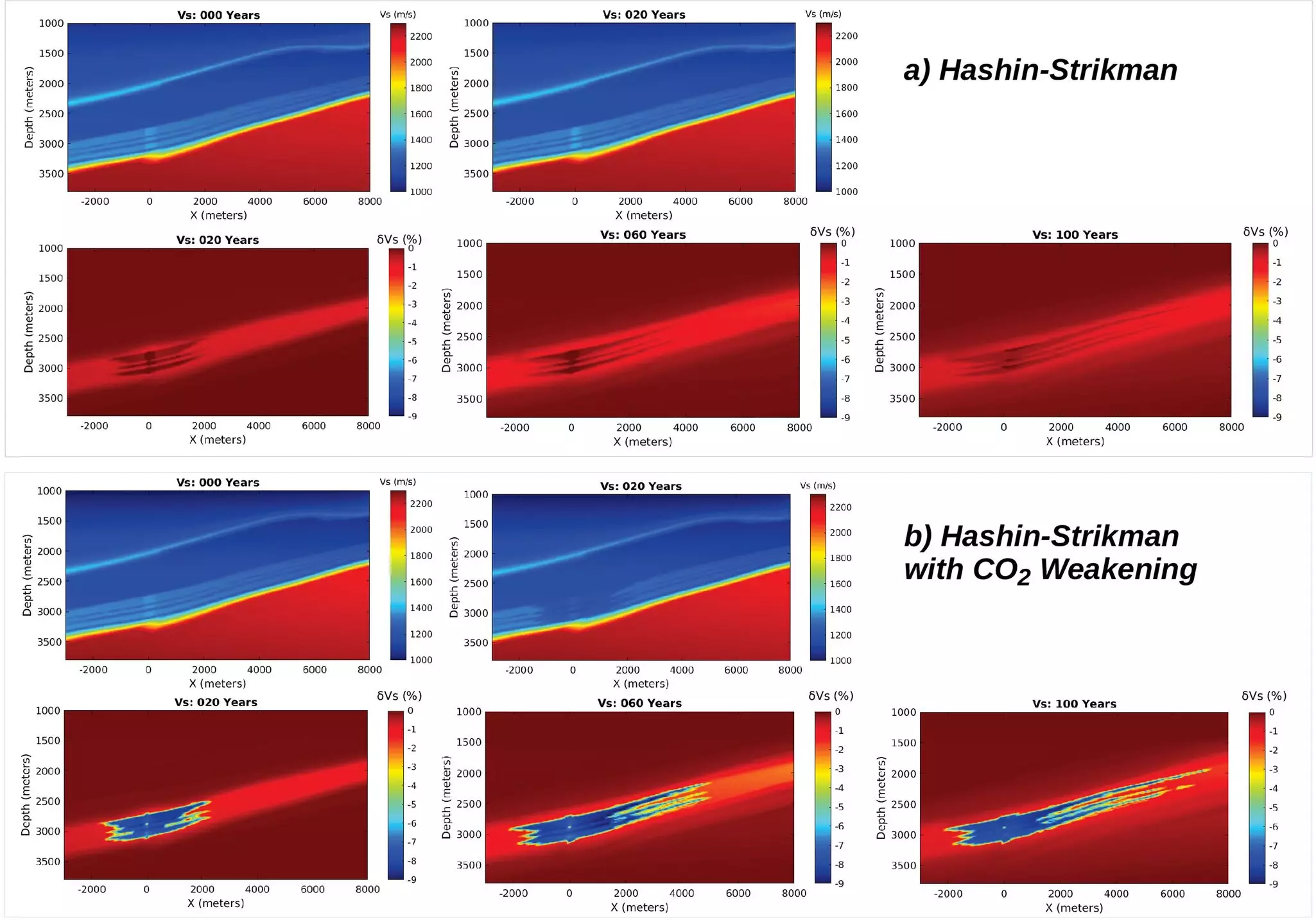As the urgency to combat climate change escalates, innovative strategies that tackle greenhouse gas emissions have become crucial. One such approach is geological carbon sequestration, a method where carbon dioxide (CO2) generated from industrial processes is stored underground to prevent its release into the atmosphere. The latest breakthrough from researchers at Los Alamos National Laboratory presents a sophisticated rock physics model that promises to significantly enhance the reliability of monitoring these subterranean carbon reservoirs. This model is not merely an academic exercise; it represents an essential advancement needed to assure the success of carbon capture and storage initiatives.
Analyzing the Shortcomings of Current Models
The conventional approach to tracking CO2 underground relies heavily on the Biot-Gassmann equation, a model designed to describe the elasticity of rock when saturated with fluids, including CO2. While this method has served as a foundational principle for years, it has notable limitations. According to Neala Creasy, the first author of the study, current practices fail to consider the nonlinear stress responses and chemical interactions that can degrade the structural integrity of rocks over time. These inadequacies increase the risk of inaccurate predictions about how CO2 behaves once injected into a geological reservoir.
The implications of these modeling shortcomings are severe. If monitoring methods can’t predict how the injected CO2 will interact with the surrounding geology, the risk of leaks potentially rises, making this one of the most critical areas to address in the ongoing fight against climate change. Hence, the development of a new model is not just important scientifically but is also crucial for environmental and public safety.
Decoding the New Rock Physics Model
The new model introduced by the Los Alamos research team enhances our understanding of CO2-rock interactions by providing a more detailed picture of how CO2 alters rock properties over time. Unlike the static approach of the Biot-Gassmann equation, this innovative model accounts for significant factors such as the long-term exposure of rocks to CO2, which influences both shear and bulk moduli. By addressing these dynamic responses, the model demonstrates greater sensitivity to shifts in elastic properties, particularly shear-wave velocity. This level of detail is essential for accurately determining how CO2 migrates through geological formations.
Lianjie Huang, a senior research scientist and co-author of the study, emphasized that with the capabilities of the new model, scientists can map changes in a storage reservoir with improved accuracy. This is paramount not just for understanding how CO2 behaves under pressure but also for ensuring the integrity of storage sites and the overall efficacy of carbon capture technology.
The Broader Implications for Climate Policy
The ramifications of these advancements are profound in the context of climate policy and strategies to reduce global greenhouse gas emissions. As carbon capture and storage become central to various climate action plans, the advancement of reliable monitoring technology becomes non-negotiable. Leaks in CO2 storage can exacerbate environmental degradation, posing risks not only to ecosystems but also to human populations residing near storage sites. Therefore, this new rock physics model is more than just a scientific achievement; it has the potential to reinforce public trust in carbon storage technologies by enhancing their safety and reliability.
Additionally, improved modeling can also assist in fine-tuning regulatory practices, guiding policymakers to make informed decisions about where and how to implement carbon sequestration projects. By contributing to a clearer understanding of CO2 behavior underground, such insights could shape future investments in carbon capture and encourage wider adoption of these technologies.
A Call to Action for Future Research
While the recent findings from Los Alamos are exciting, they also serve as a call to the scientific community for ongoing research and improvements. The shift from outdated models to complex, reliable systems must be met with additional studies that can further validate these findings. As we move into a future defined by climate challenges, it is imperative to ensure our methodologies for monitoring carbon capture remain on the cutting edge of science and technology. The road ahead necessitates adaptive frameworks that can accommodate new findings and methodologies to create a robust and sustainable approach to carbon management.


Leave a Reply